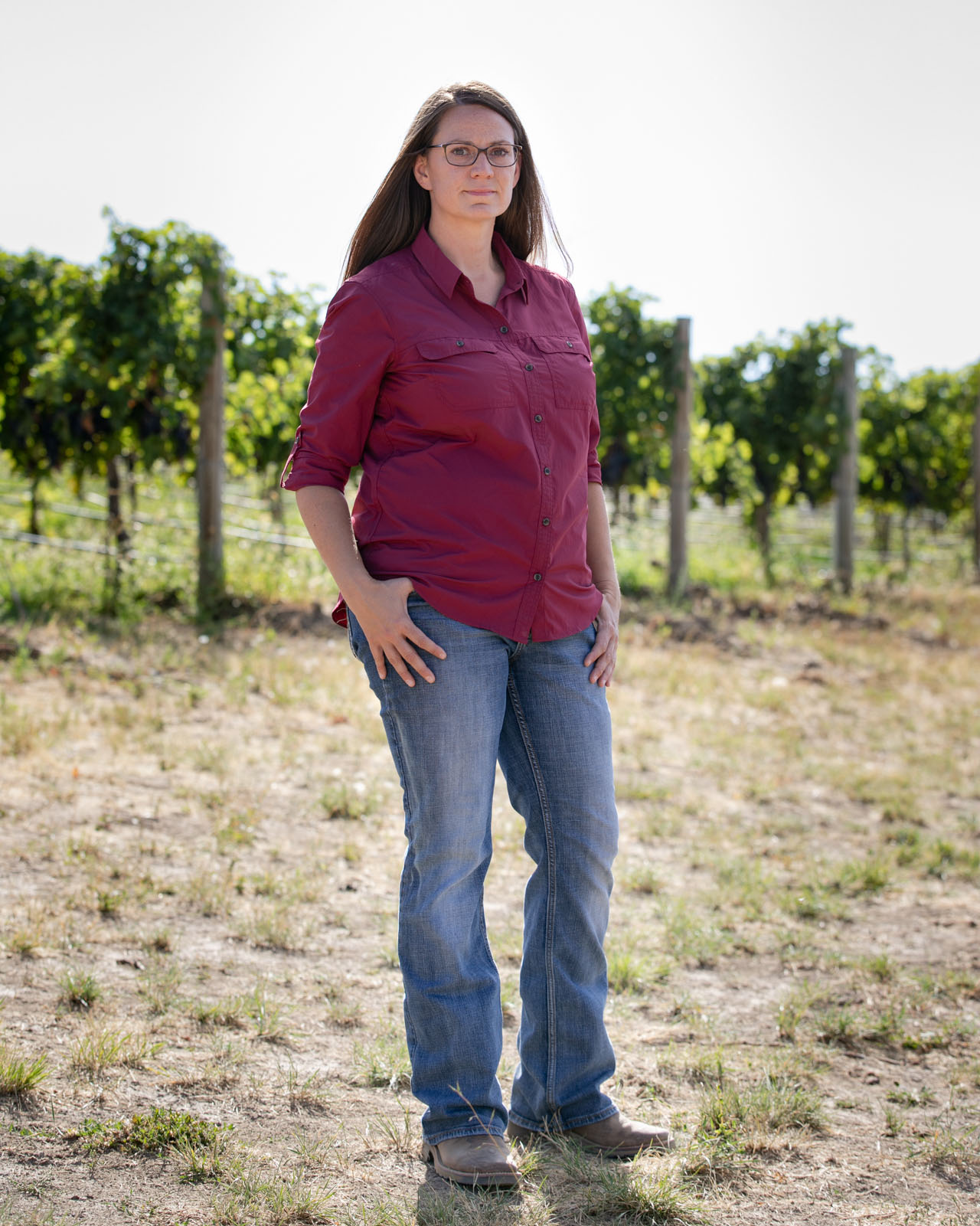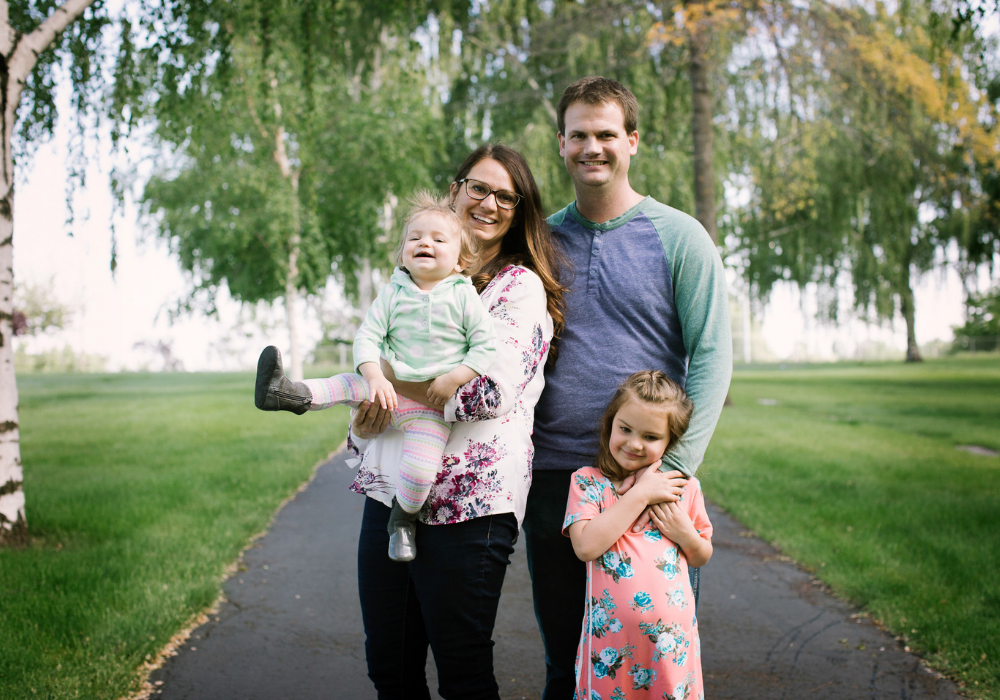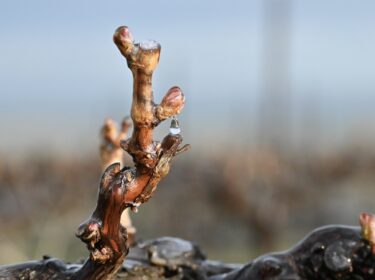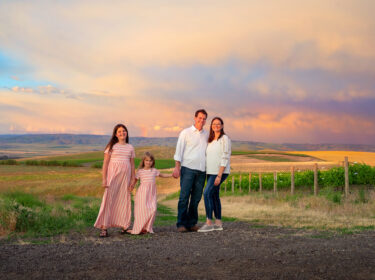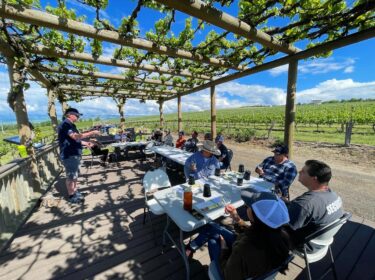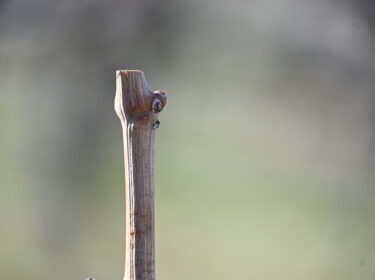“Haremos haciendo alrededor de 250 selecciones separadas.”
Meet Sadie Drury, General Manager at North Slope Management, where she oversees 50 crew members and 300 acres of vines in the SeVein area of the Walla Walla Valley. “I’ve always been working outdoors. I don’t know that farming’s the right word,” Sadie told us during our interview together, “but I’ve worked on ranches. I’ve worked on horse ranches, cattle ranches. I worked pea harvests. My first job when I was 12 was picking strawberries. It’s a rite of passage in Walla Walla to pick strawberries when you’re 12 years old.” Sadie picks a lot more now than just strawberries, as they have almost 250 picks during each harvest.
I always wanted to be outside. I always wanted to work with my hands.—Sadie Drury, North Slope Management
Translated by Laurita Angulo
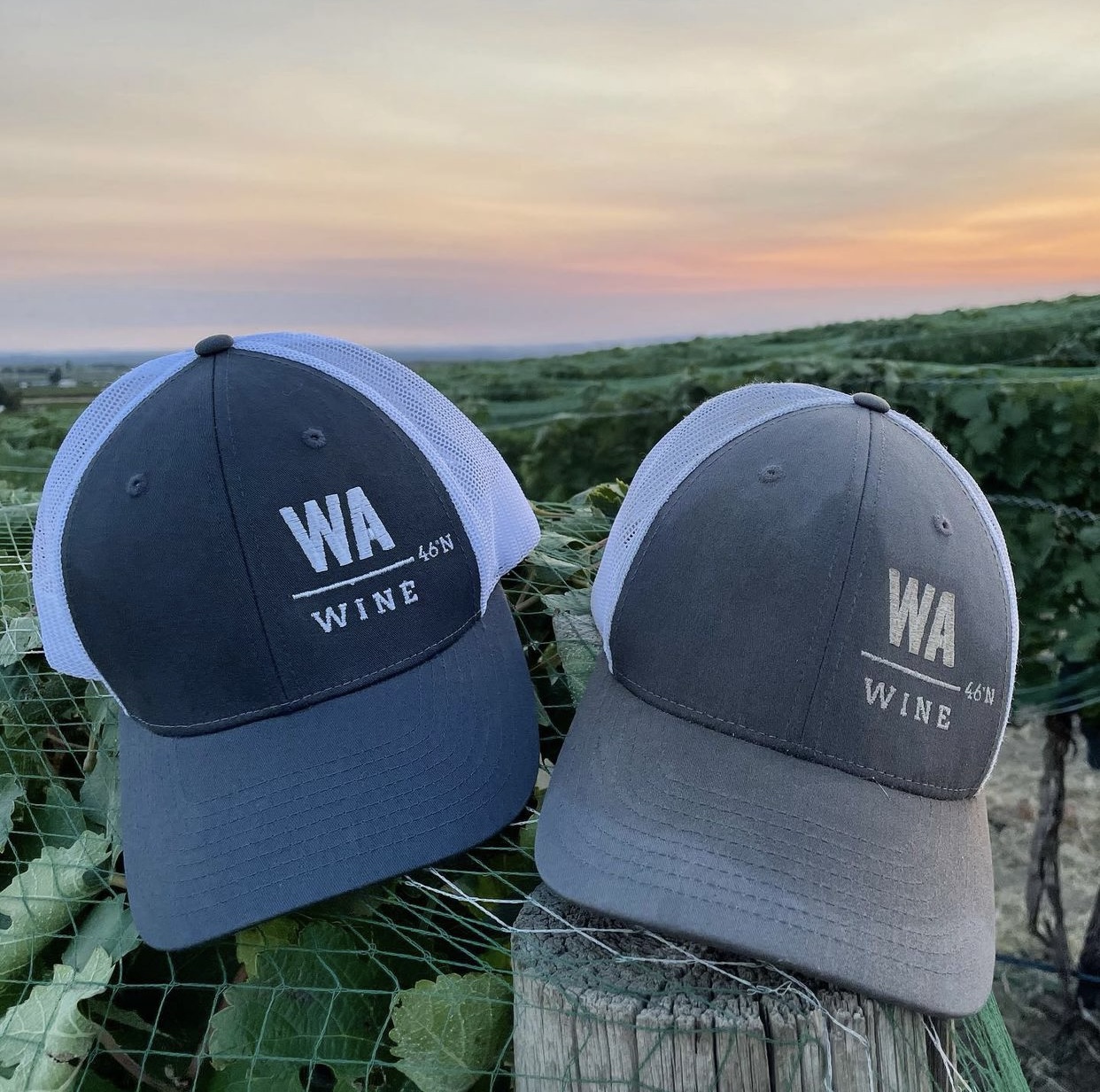
Washington Wine: What’s the 30,000-foot overview of your work?
Sadie Drury: I am a general manager for a farm management company called North Slope Management. We farm about 300 acres of grapes in the Walla Walla AVA. As a GM, I really just manage a big crew of people who do the work. I coordinate grape sales and day-to-day activities in the vineyard.
WW: How similar or different, or synonymous, is being a GM versus being a vineyard manager?
Sadie: I think that we’re unique because the way we structure things is I’m vineyard manager, but also a viticulturalist because I do so much coordination.
Being a little bit higher up, I lean on people more to help me make decisions. A viticulturist might just be doing the scouting and spraying, and a vineyard manager might just be managing the people and working with the winemakers, but I have this hybrid thing where I work with the winemakers pretty exclusively, but I generally lean on my foreman and my supervisors really heavily to manage the people for me. I try not to get too involved unless they need me. And then being also the viticulturist, I write all the irrigation recs and spray recs, but I lean really heavily on my vit techs and my interns to help me scout. It might be unique to this company, because we only have 300 acres. I think if we were larger, I would have to be just one thing or the other, but we’re just small enough that I can do a lot.
I work for North Slope Management, which also means that I’m a farm labor contractor. I can take my crew and go work anywhere.
WW: Which vineyards do you work at?
Sadie: We work exclusively in the SeVein area, in the south Walla Walla Valley, so we don’t ever have to move equipment. We don’t have to put things on trailers and drive it across town. It’s not that I couldn’t. I could go work more places, we just choose not to. It’s a good draw for my employees. All my employees are going to drive to work and work from the same home base every day.
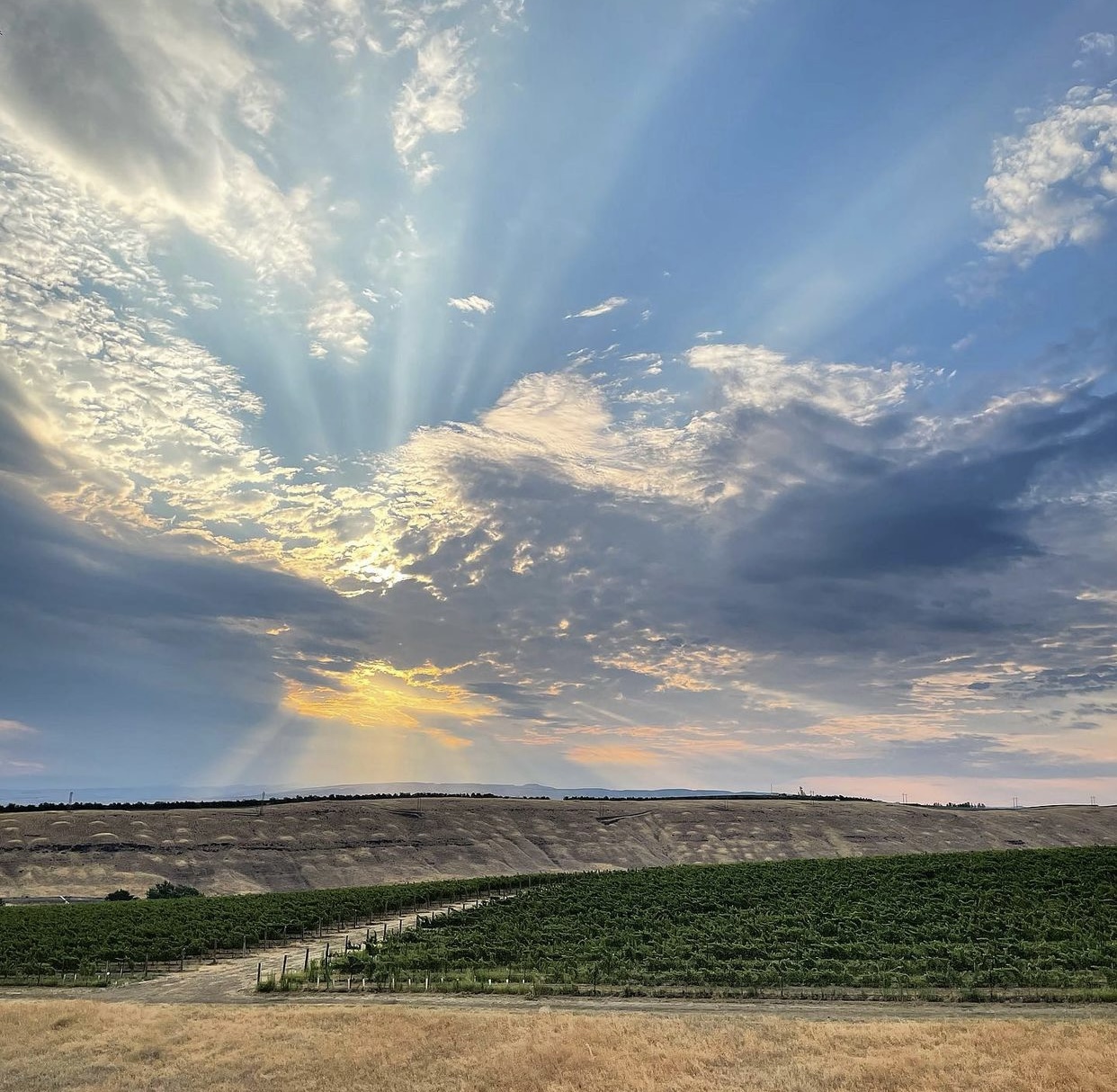
WW: So you manage 300 acres. What does that mean, in terms of scale or scope?
Sadie: We sell grapes to 55 different wineries each year. The majority of all the sales are out of Seven Hills Vineyard, and then the other six vineyards are ones we custom farm for estate fruit.
We farm a vineyard for L’Ecole, and it all gets shipped to L’Ecole. We do that for JM Cellars as well as Pambrum Winery. We’ve got these different customers that we custom farm for, but Seven Hills Vineyard is where the grapes are shipped off to multiple wineries. And really what that translates to is a lot of really organized chaos. Because we’ll do—I think I counted during harvest—we’ll end up doing about 250 separate picks. We pick a half-acre here and then we’ll pick a quarter acre there and then we’ll pick an acre here, all for different clients.
We do all these different picks, and we have to keep track of all the bins and all the people and all the places and make sure the right fruit gets on the right trucks. I don’t think that 300 acres is a large amount until you start breaking it down into all the little pieces. The custom farming part is where it gets tricky. For example, I’ve got Block 14, which is Cabernet grapes. It’s seven acres and we have 12 different customers in that one block. One guy wants 2 tons an acre, and the guy next to him might want four, and some guys want their leaves pulled while some guys don’t. It’s just a lot of little pieces that you have to put together.
WW: So how did you get to being here? What was your journey like? Were you always in farming and in grapes and in wine? Or was that a big pivot at some point?
Sadie: I’ve always been working outdoors. I don’t know that farming’s the right word, but I’ve worked on ranches. I’ve worked on horse ranches, cattle ranches. I worked pea harvest. My first job when I was 12 was picking strawberries. It’s a rite of passage in Walla Walla to pick strawberries when you’re 12 years old.
I always wanted to be outside. I always wanted to work with my hands. After high school, I went to college for one quarter at Walla Walla University and I was like, “I’m out. I’m not meant to sit in a classroom. This is not for me.” So I traveled. I lived in Texas and I lived in Las Vegas, I lived in Idaho, and I came back to Walla Walla eventually. I was training horses in Walla Walla, but really, I was bartending. Bartending all night to make money, and then riding horses all day because nobody makes money riding horses. The wine scene had exploded from the time that I graduated high school to the time that I returned. We went from 30 wineries in 2001 to close to 100 in 2007. There was this real big blow up in that time, and I wanted to be part of it. I didn’t necessarily want to be in the cellar. I knew from the start, I just wanted to grow grapes. I went on a date with a winemaker and he took me into a vineyard and I was like, “This is it. I’m going to grow grapes.”
And that’s what happened. I started school in 2007, and I went to the Community College for two years and got an internship. I ended up sticking around there, at Ciel du Cheval in the Red Mountain AVA for five years working for Jim Holmes and then landed in Walla Walla in early 2013.
I always wanted to be outside. I always wanted to work with my hand. I’m not meant to sit in a classroom.
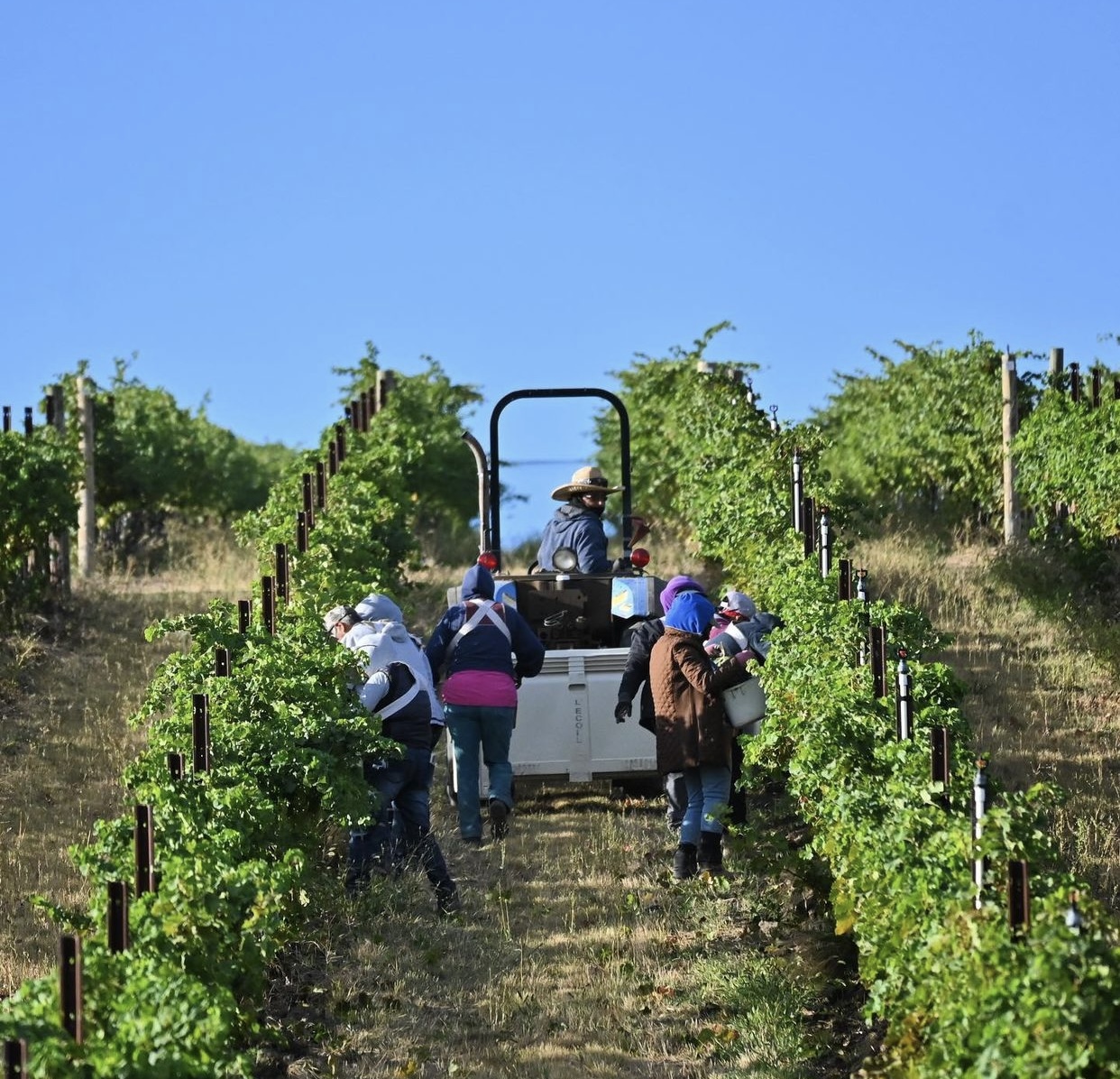
WW: How many people are part of your crew? How many crews do you have? What’s that whole operation look like that you manage on that daily and weekly basis?
Sadie: I have about 50 employees. Depending on the week, it might be 40, and then we ramp up to the 50’s during peak. Our farm management company is owned by Norm McKibben of Pepper Bridge Winery, Chris Figgins of Leonetti Cellar and Figgins Wine, and Marty Clubb of L’Ecole No 41. Those are my three bosses, so I’ve got three people I answer to, and then I have 50 people who answer to me. And then I also answer to all my winemakers as well. But that’s the structure of it.
WW: It’s July 2021 at the time of this interview—where are we right now in harvest?
Sadie: In veraison, it’s so beautiful. I wouldn’t say it’s my favorite time of the year, but it’s definitely a top three. It’s pretty awesome to see everything changing colors. What’s on my mind right now? It’s going to be a light vintage, so normally we’d be thinning crop right now, but there’s not really anything to thin. We’re going to be working on some other projects. We’re working in some young vineyards, we’re doing tying and training, picking up what shoots we want to tie to the wire, so that there’ll be future cordons.
WW: What exactly does that mean?
Sadie: When we plant the grapes, it’s just a little stick in the ground. And there’s not much sticking out of the ground. From that little stick, it’ll grow two long shoots up towards the sky. We spend about two years developing those two shoots. And when the plants are two years old, which they are now, we take them and we lay them on the cordon wire. So you always think about how a plant grows up and out. That requires a fair amount of training. We pick which shoots are well and beautiful and strong, and then we lay them down and we tape them to the wire. And then hopefully, that part of the plant will be there for the next 50 years, as long as it’s in the ground.

WW: How all-consuming is harvest for you?
Sadie: It’s pretty all-consuming, but in a good way. We might work more hours during harvest than any other time of the year. But the great thing about harvest is by the time harvest comes around, there’s just one job and it’s just to pick the grapes and to get the crew to pick the correct grapes, get them in the correct bins, put them on the correct truck to the correct winery.
It’s a lot, but it’s actually a lot easier and less emotionally draining than when it’s April or May and we’re shoot-thinning, spraying, irrigating, trying to keep our tractors working, and weeding. The crew might be doing three different jobs. So harvest is all consuming, but it’s the light at the end of the tunnel and a fresh breath of air compared to how stretched-thin we are through all the other jobs during the rest of the year.
The other great thing about harvest is that there are no meetings. I don’t have to worry about budgets during harvest because nobody’s thinking about that. We just finished all of our annual bank loans and it’s amazing how time-consuming it is just to do all the budgets and make sure we get everything even just to the bank. And that’s one of those things that’s my job because I’m the only person out here who’s keeping an eye on the finances. So I like harvest. I don’t like waking up at three in the morning to start picking grapes, but I love that there’s just one job.
The other great things about harvest is that there are no meetings. I don’t have to worry about budgets.
WW: What does the collaboration with wineries look like? With 50 wineries, or clients, do you get to be selective in who you farm grapes for?
Sadie: We do get to be selective. What I love is this is my ninth vintage year, and over the last nine years, the vineyard has had a good reputation. I started with somewhere that had a good reputation.
I’ve built that reputation further. I’ve grown really good trust with my customers, and I have a really good relationship with them. For me, I get to work with really good people who trust me to do my job well, and I’m not micromanaged and that’s amazing. But the other side of that is, because our vineyard has a good reputation, I don’t work with people who make bad wine. I don’t work with people who don’t pay their bills. I get to be really selective and just working with really cool people who I know are going to make great wine from my vines and pay their bills and be responsible winemakers. I feel super lucky that way, that I can be selective. And I think that’s always the goal for probably any vineyard or any wineries, to reach the place that we’re at now. It is a good feeling. I work at a place where winemakers want to put the vineyard name on the label.
I work at a place where winemakers want to put the vineyard name on the label.

WW: Speaking of, you were named Winegrower of the Year in 2020. What does it feel like to get that recognition?
Sadie: When I got that Grower of the Year Award, it was interesting because (due to COVID-19) I wasn’t in front of a crowd. I didn’t get to give thanks back to people. I had a moment of thinking, “I don’t deserve this. I just organize the people who do the work.” And I really wanted to find a way to say thanks and show how amazing my crew is because without them, I don’t get to be Grower of the Year. I don’t get to have good grapes. I don’t get to have good relationships with my customers, or be on the Wine Commission [Board] or any of this stuff. My crew is what makes it happen. They make it happen because they trust me, they trust me and they want to work for me and they trust that I’ll take care of them. And I think I pay them well.
I wanted to find a way to showcase that. So I came up with this idea that I would just showcase a different employee every Friday. And we started with Lupe because he’s the most senior employee, but also because if I can get Lupe onboard with something, I can get other people on board with something. My crew is used to me taking pictures of them, but it’s not their favorite thing. They want to be in groups so that they have their faces covered or whatever. And I don’t blame them. I don’t know if there’s a reason for that.
As we started to do this Farmer Friday series on my Instagram, I noticed more and more of my employees were getting Instagram and following me. More of them were sending me friend requests on Facebook. It was pretty cute. And so far, everybody’s super excited when I come to them and they want their picture taken. They want to show their face. They want their whole name on social media. And I think they’re really seeing it as a way where I’m thanking them and not just being like, “Hey, look who works for me,” but I’m telling their story. And they love doing it with their spouses or siblings or father, son, whatever. And so everybody’s been super excited, including one lady who never wanted her picture taken. She wouldn’t even get in a group picture, but she has been asking the supervisor now when is it her turn.
WW: Two final questions: What takes up your time outside of work and wine?
Sadie: My family isn’t a hobby, but they are my life outside of wine. And horses. I ride horses still. They’re pretty fun. And live music, I love live music.
WW: Final question: what’s your favorite (or three) non-musical sounds?
Sadie: What musical sounds?
WW: Non-musical.
Sadie: Oh, a thunderstorm.
WW: Wow, nice.
Sadie: Top of the list. I really love like the sounds of being in the mountains somewhere. So creek and birds and all of that is a wonderful sound. And just the sound of silence. Or, a silent forest, even though there’s lots of sounds there. And my kids laughing. I could be having a bad day and my four-year old can be laughing about something and it’ll just turn everything around.
My family isn’t a hobby, but they are my life outside of wine.—Sadie Drury
Traducido por Laurita Angulo

Washington Wine: Sumerjámonos y veamos lo superficial primero: ¿dónde se encuentra, cuál es su título y cuál es la vista general de 30,000 pies?
Sadie Drury: Soy gerente general de una empresa de gestión agrícola llamada North Slope Management. Cultivamos alrededor de 300 acres de uvas en Walla Walla AVA. Como gerente general, realmente solo administro un equipo grande de personas que hacen el trabajo. Coordino las ventas de uva y las actividades del día a día en el viñedo.
WW: ¿Qué tan similar o diferente, es ser un GG versus ser un gerente de viñedos?
SD : Creo que somos únicos porque la forma en que estructuramos las cosas es que soy gerente de viñedo, pero también viticultora porque hago mucha coordinación.
Al tener mejor posicion, me apoyo más en las personas para que me ayuden a tomar decisiones. Un viticultor podría estar simplemente explorando y rociando, y un gerente de viñedos podría estar manejando a la gente y trabajando con los enólogos, pero tengo esta cosa híbrida en la que trabajo con los enólogos de manera bastante exclusiva, pero generalmente me apoyo en mi mayordomo y mis supervisores en gran medida para que administren a las personas por mí. Trato de no involucrarme demasiado a menos que me necesiten. Y luego, siendo también la viticultora, escribo todas las recomendaciones de riego y aspersión, pero me apoyo mucho en mis tecnicos de viticultura y mis pasantes para que me ayuden a explorar. Puede ser exclusivo de esta empresa, porque solo tenemos 300 acres. Creo que si fuéramos más grandes, tendría que ser solo una cosa o la otra, pero somos lo suficientemente pequeños que podemos hacer mucho.
Trabajo para North Slope Management, lo que también significa que soy contratista de mano de obra agrícola. Puedo llevar a mi tripulación e ir a trabajar a cualquier parte.
WW: ¿En qué viñedos trabajas?
SD : Trabajamos exclusivamente en el área de SeVein, por lo que nunca tenemos que mover equipo. No tenemos que poner cosas en remolques y conducirlos por la ciudad. No es que no pudiera. Podría ir a trabajar a más lugares, simplemente elegimos no hacerlo. Esto jala a los empleados. Todos mis empleados conducirán al trabajo y trabajarán desde la misma base de operacion todos los días.

WW: Entonces administras 300 acres. ¿Qué significa eso, en términos de escala o alcance?
SD : Vendemos uva a 55 bodegas diferentes cada año. La mayoría de todas las ventas provienen de Seven Hills Vineyard, y luego los otros seis viñedos son los que cultivamos a medida para la fruta de la finca.
Cultivamos un viñedo para L’Ecole y todo se envía a L’Ecole. Lo hacemos para JM Cellars y para Pambrum Winery. Tenemos estos diferentes clientes para los que cultivamos a medida, pero Seven Hills Vineyard es donde se envían las uvas a múltiples bodegas. Y en realidad eso se traduce en mucho caos organizado. Porque haremos — creo que conté durante la cosecha — haciendo alrededor de 250 selecciones separadas. Seleccionamos medio acre aquí y luego recogemos un cuarto de acre allí y luego recogemos un acre aquí, todo para diferentes clientes.
Hacemos todas estas selecciones diferentes, y tenemos que hacer un seguimiento de todos los contenedores y todas las personas y todos los lugares y asegurarnos de que la fruta correcta llegue a los camiones correctos. No creo que 300 acres es gran cantidad hasta que empiezas a dividir en pequeños pedazos. La parte de la agricultura personalizada es donde se complica. Por ejemplo, tengo el Bloque 14, que son uvas Cabernet. Son siete acres y tenemos 12 clientes diferentes en ese bloque. Un cliente quiere dos toneladas por acre, y el cliente a su lado puede querer cuatro, y algunos quieren que les arranquen las hojas mientras que otros no. Es un montón de pequeñas piezas que tienes que juntar.
WW: Estoy obteniendo una imagen tuya como Tom Cruise en Sentencia Previa.
SD : No he visto eso en 15 años.
WW: Lo mismo. Continuemos: ¿cómo llegaste hasta aquí? ¿Cómo fue tu recorrido? ¿Estuviste siempre en la agricultura y en las uvas y en el vino? ¿O fue un gran giro en algún momento?
SD : Siempre he trabajado al aire libre. No sé si agricultura es la palabra correcta, pero he trabajado en ranchos. He trabajado en ranchos de caballos, ranchos de ganado. Trabajé la cosecha de chicharo. Mi primer trabajo cuando tenía 12 años fue recogiendo fresas. Es un rito de iniciación en Walla Walla recoger fresas cuando tienes 12 años.
Siempre quise estar afuera. Siempre quise trabajar con mis manos. Después de la secundaria, fui a la Universidad de Walla Walla durante un trimestre en la que decidi: “Me voy. No estoy destinada a sentarme en un salón de clase. Esto no es para mí”. Así que viajé. Viví en Texas, Las Vegas y en Idaho y eventualmente regresé a Walla Walla. Estaba entrenando caballos en Walla Walla, pero en realidad, era camarera. Trabajaba toda la noche para ganar dinero y luego montaba caballos todo el día porque nadie gana dinero montando caballos.
La escena del vino había explotado desde el momento en que me gradué de la escuela secundaria hasta el momento en que regresé. Pasamos de 30 bodegas en 2001 a cerca de 100 en 2007. Hubo un gran estallido en ese momento y yo quería ser parte de él. No necesariamente quería estar en la bodega. Lo supe desde el principio, solo quería cultivar uvas. Tuve una cita con un enólogo y me llevó a un viñedo y me dije a mi misma: “Esto es. Voy a cultivar uvas”.
Y eso es lo que pasó. Comencé la escuela en 2007, fui al Community College durante dos años y obtuve una pasantía. Terminé quedándome allí, en Ciel du Cheval durante cinco años trabajando para Jim Holmes y termine en Walla Walla a principios de 2013.
Siempre quise estar afuera. Siempre quise trabajar con mis manos. No estoy destinada a sentarme en un salón de clase.

WW: Me encanta. Entonces, ¿cuántas personas forman parte de su tripulación? ¿Cuántas tripulaciones tienes? ¿Cómo es toda esa operación que manejas a diario y semanalmente?
SD : Tengo unos 50 empleados. Dependiendo de la semana, podría ser 40, y luego aumentamos a los 50 que es el punto máximo.
WW: Para cuando salga esta publicación, sé que habrá cambiado, pero ¿dónde estamos ahora en el año de la cosecha?
SD : En envero, es tan hermoso. No diría que es mi época favorita del año, pero definitivamente está entre las tres mejores. Es bastante impresionante ver todo cambiar de color. ¿Qué tengo en mente ahora mismo? Va a ser una cosecha ligera, por lo que normalmente estaríamos raleando la cosecha en este momento, pero en realidad no hay nada que ralear. Vamos a estar trabajando en algunos otros proyectos. Estamos trabajando en unos viñedos jóvenes, estamos atando y entrenando, recogiendo los brotes que queremos atar al alambre, para que haya futuros cordones.
WW: ¿Qué significa eso exactamente?
SD : Cuando plantamos las uvas, es solo un pequeño palo en la tierra. Y no hay mucho que sobresalga del suelo. De ese palito crecerán dos largos brotes hacia el cielo. Pasamos unos dos años desarrollando esos dos brotes. Y cuando las plantas tienen dos años, que son ahora, las tomamos y las ponemos en el cordón de alambre. Así que siempre piensas en cómo crece una planta hacia arriba y hacia afuera. Eso requiere una buena cantidad de entrenamiento. Elegimos qué brotes están bien, hermosos y fuertes, y luego los colocamos y los pegamos con cinta adhesiva al alambre. Y luego, con suerte, esa parte de la planta estará allí durante los próximos 50 años, mientras que esté dentro de la tierra.
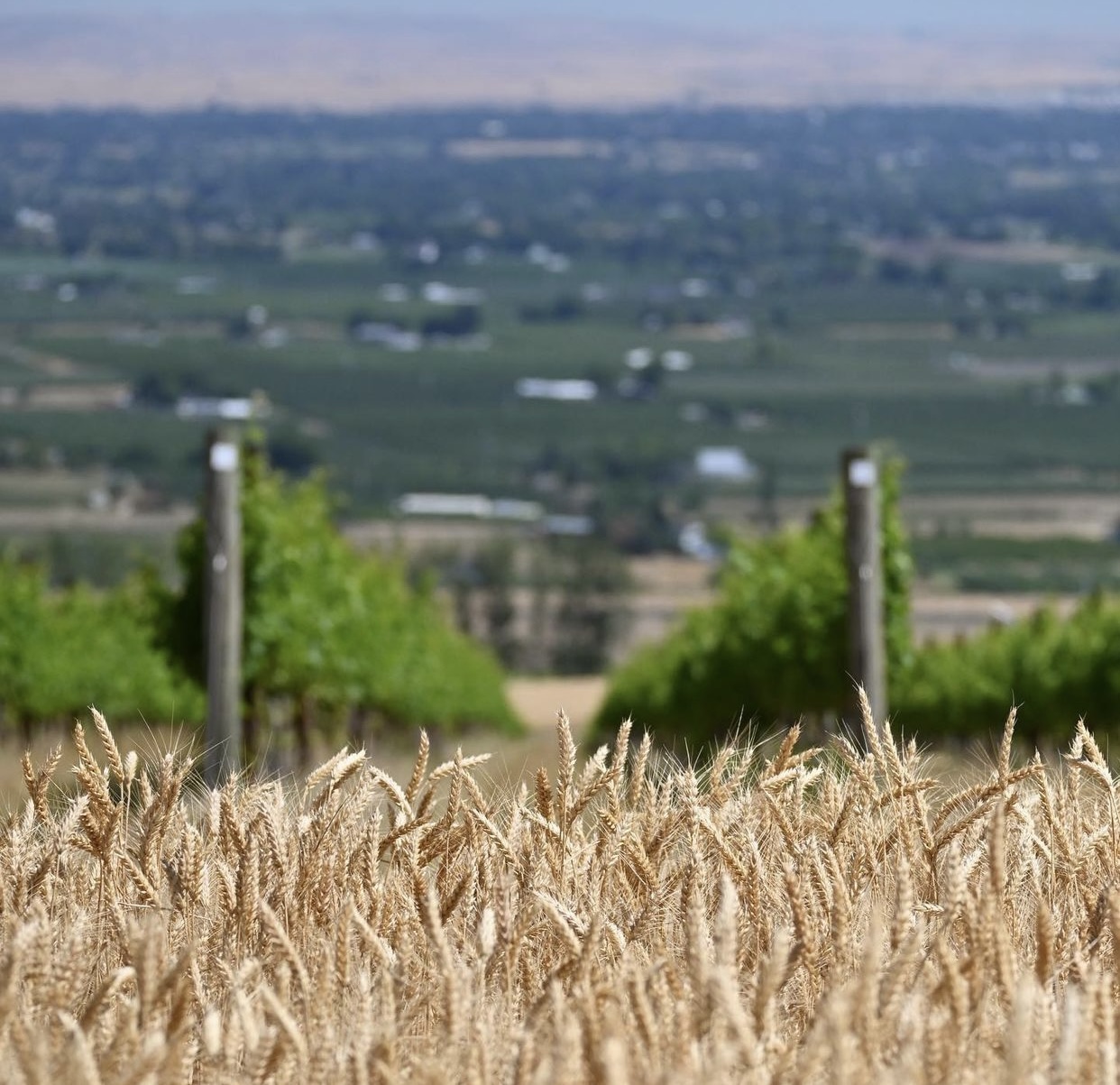
WW: ¿Qué tanto tiempo require de ti la cosecha?
SD : Requiere bastante, pero en el buen sentido. Podríamos trabajar más horas durante la cosecha que en cualquier otra época del año. Pero lo mejor de la cosecha es que, cuando llega la cosecha, solo hay un trabajo el cual es de recoger las uvas. Que el personal recoja las uvas correctas, las coloque en los contenedores correctos, y en el camión correcto para la bodega correcta.
Es mucho, pero en realidad es mucho más fácil y menos agotador emocionalmente que cuando es abril o mayo y estamos cortando brotes, rociando, regando, tratando de mantener nuestros tractores funcionando y deshierbando. La tripulación podría estar haciendo tres trabajos diferentes. Así que la cosecha consume todo, pero es la luz al final del túnel y un soplo de aire fresco en comparación con lo sobreexigidos que estamos a través de todos los otros trabajos durante el resto del año.
La otra gran cosa acerca de la cosecha es que no hay juntas. No tengo que preocuparme por los presupuestos durante la cosecha porque nadie está pensando en eso. Acabamos de terminar todos nuestros préstamos bancarios anuales y es sorprendente el tiempo que se lleva para hacer todos los presupuestos y de asegurar de enviar todo al banco. Y ese es mi trabajo porque soy la única persona aquí que vigila las finanzas. Así que me gusta la cosecha. No me gusta levantarme a las tres de la mañana para empezar a recoger uvas, pero me encanta que solo haya un trabajo.
La otra gran cosa acerca de la cosecha es que no hay juntas. No tengo que preocuparme por los presupuestos.
WW: ¿Cómo es la colaboración con las bodegas? Con 50 bodegas o clientes, ¿puedes ser selectivo en cuanto para quién cultivas uvas?
SD : Llegamos a ser selectivos. Lo que me encanta es que este es mi noveno año de cosecha, y durante los últimos nueve años, el viñedo ha tenido una buena reputación. Empecé con un lugar que tenía una buena reputación.
He crecido esa reputación aún más. He desarrollado la confianza con mis clientes y tengo muy buena relación con ellos. Me toca trabajar con personas realmente buenas que confían que hare un buen trabajo, y no soy microgestionado y eso es increíble. Pero el otro lado de eso es que, como nuestro viñedo tiene buena reputación, no trabajo con gente que hace vino malo. No trabajo con personas que no pagan sus cuentas. Pienso que soy selective y trabajo con personas que son realmente geniales que sé que van a hacer un gran vino de mis viñedos y pagarán sus facturas y serán enólogos responsables. Me siento súper afortunada de esa manera, que puedo ser selectiva. Y creo que ese es siempre el objetivo de probablemente cualquier viñedo o cualquier bodega, llegar al lugar en el que estamos ahora. Es una buena sensación. Trabajo en un lugar donde los enólogos quieren poner el nombre del viñedo en la etiqueta.
Trabajo en un lugar donde los enólogos quieren poner el nombre del viñedo en la etiqueta.

WW: Hablando de eso, fuiste nombrada Viticultora del Año en 2020. ¿Qué se siente al recibir ese reconocimiento?
SD : Cuando obtuve el premio de Productora del Año, fue interesante porque no estaba frente a una multitud. No pude dar las gracias a la gente. Y tuve un momento para pensar: “No me merezco esto. Solo organizo a las personas que hacen el trabajo”. Y realmente quería encontrar una manera de decir gracias y mostrar cuán increíble es mi equipo porque sin ellos, no puedo ser la Productora del Año. No consigo tener buenas uvas. No consigo tener buenas relaciones con mis clientes, ni estar en la comisión de vinos ni ninguna de estas cosas. Mi equipo es el que hace esto. Lo hacen posible porque confían en mí, confían en mí y quieren trabajar para mí y confían en que los cuidaré. Y creo que les pago bien.
Quería encontrar una manera de mostrar eso. Así que se me ocurrió la idea de reconocer a un empleado diferente cada viernes. Y comenzamos con Lupe porque él es el empleado de mayor rango, pero también porque si puedo convencer a Lupe de estar de acuerdo en algo, puedo convencer a otras personas tambien a que esten de acuerdo con lo mismo. Mi equipo está acostumbrado a que les tome fotos, pero no les gusta. Quieren estar en grupos para poder taparse la cara o algo asi. Y no los culpo. No sé lo suficiente sobre sus vidas personales para saber si hay una razón para eso.
Cuando comenzamos a hacer esta serie Farmer Friday en mi Instagram, noté que mis empleados empezaban a seguirme en Instagram. Tambien empezaban a mandarme solicitudes de amistad en Facebook. Fue muy lindo. Y hasta ahora, todos están súper emocionados cuando llego a ellos y quieren que les tomen una foto. Quieren mostrar su cara. Quieren su nombre completo en las redes sociales. Y creo que realmente lo están viendo como una forma en la que les estoy agradeciendo y no solo diciendo: “Oye, mira quién trabaja para mí”, sino que estoy contando su historia. Y les encanta hacerlo con sus cónyuges o hermanos o padre, hijo, o lo que sea. Y todos han estado súper emocionados, incluida una mujer que nunca queria que le tomaran foto. Ni siquiera salia en fotos de grupo, pero ahora le ha estado preguntando al supervisor cuándo le toca su turno.
Ha sido una experiencia buena. Ha sido súper divertedo. Y luego llego a conocer más a la gente y eso también es divertido.
WW: Algunas preguntas finales. ¿Qué ocupa tu tiempo fuera del trabajo y el vino?
SD: Mi familia no es un hobby, pero son mi vida fuera del vino. Y caballos. Monto caballos todavía. Son bastante divertidos. Y amo la música en vivo, amo la música en vivo.
WW: Pregunta final: ¿cuál es tu sonido favorito (o tres) no musicales?
SD : ¿Qué suena musical?
WW: No musical.
SD : Oh, una tormenta.
WW: Guau, agradable.
SD : El primero de la lista. Me encantan los sonidos que se escuchan en las montañas. El arroyo y pájaros y todo eso es un sonido maravilloso. Y simplemente el sonido del silencio. O un bosque silencioso, aunque hay muchos sonidos allí. Y mis hijos riéndose. Podría estar teniendo un mal día y mi hijo de cuatro años puede estar riéndose de algo y simplemente cambiará todo.
WW: La mejor nota para terminar: la risa.
My familia no es un hobby, pero son mi vida fuera del vino.—Sadie Drury
